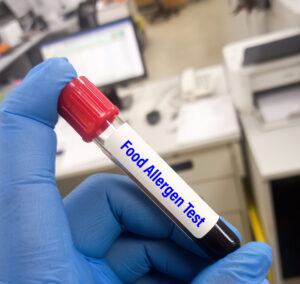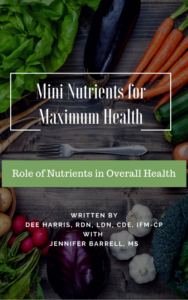
Do you suspect you are more reactive to foods? Your immune system reacts in multiple ways that may result in a food allergy, food sensitivity, or intolerance. The reaction to food is an abnormal response in the gut that occurs for many different reasons. It can also occur at any age. Let’s explore the differences between food allergies, sensitivities, and intolerances.
A food intolerance is the body’s lack of an enzyme to break down the food correctly. Think of a lactose intolerance when one consumes milk or ice cream and then feels cramping and has diarrhea. This is because their body does not make enough of the enzyme lactase to break it down. The workaround for this is taking enzymes with the food. Lactose-free milk is milk where the enzyme has been added to break down the lactose.
A food sensitivity (IgG) is usually the result of gut permeability or leaky gut. When food drops through an ultra-permeable lining of the gut, the lymph system looks at the food and decides what belongs and what doesn’t. Certain foods that you are used to eating, may fall through the lining and get placed on the “doesn’t belong” list. Now the immune system creates antibodies, called IgG, to the proteins in specific foods. These antibodies may lead to inflammation and irritation of not only the gut lining but may cause systemic issues as well. What may amplify the reaction is the production of C3D or complement. C3D is activated in response and attaches to the antigen and greatly increases inflammation and symptoms of this sensitivity from 1,000 to 10,000-fold! It is important to test both IgG and C3D at the same time to determine the culprit foods and the extent of the sensitivity. Food sensitivities are subtler than an allergy and are hard to determine with just an elimination diet because it may take a longer time to have a reaction, up to 3-4 days, after consuming the food.
A food allergy (IgE) is quite different than a food sensitivity. These are immediate responses to a substance or food that enters the body. IgE reactions may be very serious and can cause symptoms such as difficulty breathing, hives, or swelling. The antibodies produced by the body in response to the exposure are IgE antibodies. These antibodies can also become confused, or cross-reactive, and begin attacking foods. IgE is associated with allergies to food, environment, animals, or even parasitic infections. Sometimes a person reports that they have “outgrown” their food allergy. The creation of an IgG4 (immunoglobulin G subtype 4) is associated with allergy therapies to help neutralize the reaction of IgE. Our bodies may also create IgG4 in response to exposure and IgE. Occasionally very high levels of IgG4 may also be damaging and contribute to Eosinophilic Esophagitis as well as contributing to autoimmune thyroid disease. IgG4 may also be a benefit by creating a blocking potential when IgG4 production is greater than IgE production. This will decrease the allergic reactions to the food allergy.
It is important to test for all of these reactions when having a food allergy and sensitivity test to get the full picture. We like using Precision Point Diagnostics Precision Allergy 88 test. This blood test will look at 4 groups of antibodies- IgE, IgG4, IgA, and IgG as well as complement C3d. Most other allergy/ sensitivity tests only look at one group of antibodies. If you have symptoms such as diarrhea, gas, bloating, fatigue, constipation, hives, or migraines, this is a test to consider. After assessing the patient’s full history and symptoms, we can develop a plan to lower inflammation, heal gut permeability, and blunt the immune response to restore health.
At D-Signed Nutrition, we use the Precision Point P88 Dietary Antigen test . We find this is the most comprehensive look at how the immune system is reacting to foods.



